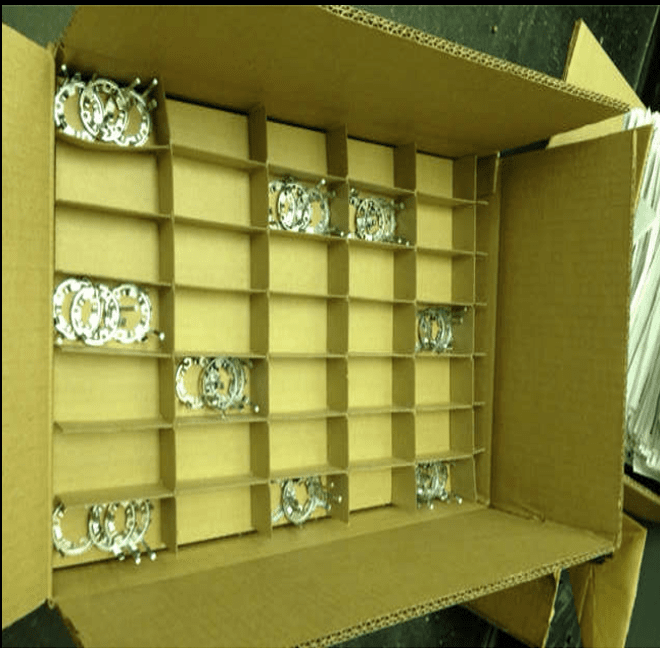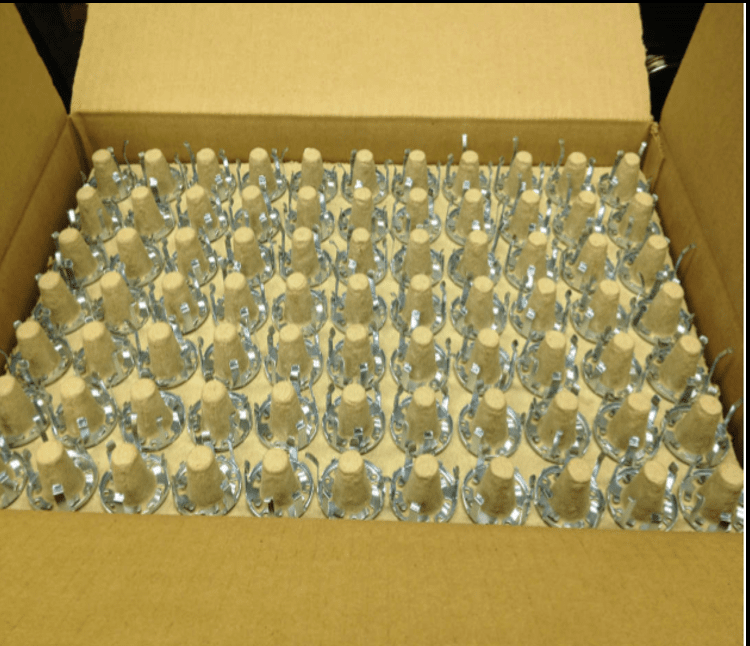Case Study: Redesigning Packaging Prevents Damage and Improves End-User Efficiency
Sometimes customers require stamped parts to be packaged to protect them from damage during transportation. When parts include features that are susceptible to nesting, they also need to stay organized and accessible so they can be used efficiently at the point of assembly. The original package design for this regulator clip had some room for improvement.
The Challenge
Though secured in a gridded tray in groups of three, the individual clips could still move around and become tangled. It was also easy to accidentally pick up two or three at once, slowing down assembly and risking parts would become bent or damaged when separated. The challenge was to develop a stable and space-efficient system to keep the parts separated yet easy to access.

CEP’s Solution
The gridded trays were replaced with egg crate-style trays that hold each clip individually on paperboard spindles. The new trays lay atop each other for a secure fit in the carton and do not allow lower layers to become compressed or crushed.
The Outcome
New packaging is more robust and secure. Because parts are isolated in the trays, tangling and shifting during transportation, storage, and end-use are eliminated. The regularly spaced spindles also allow the stamper to pack parts faster. Most important, it’s easier for the customer to place the trays at their workstations and retrieve individual pieces for efficient assembly.
Process Details
As shown in the photo below, the new trays hold 77 clips each, which is fewer than the original trays. However, because the spindles in the new trays take vertical pressure off the parts, more trays can now fit in the same master box. This means more parts fit into each box with the new tray design.
